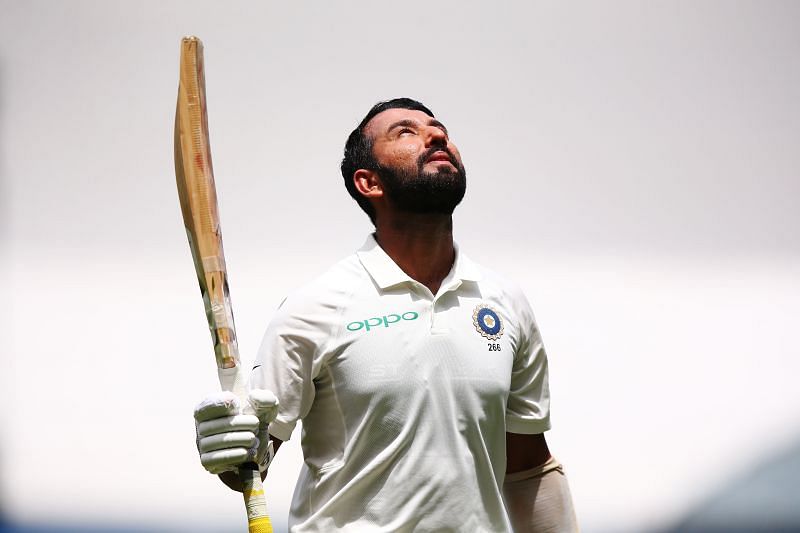
Cheteshwar Pujara's overseas form adds to India's batting headaches
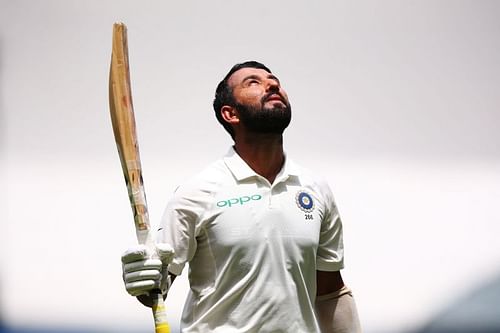
During the 2018-19 series, Australia just couldn’t get enough of Cheteshwar Pujara. The Indian, who had come into the series on the back of some frivolous form, regained his purple patch as he grafted his way to 521 runs across 7 innings, which included 3 magnificent tons.
Thus, as India arrived on Australian shores towards the fag end of 2020, there was considerable expectation that Cheteshwar Pujara would spearhead the visitors’ charge, especially with Virat Kohli being granted paternity leave, post the 1st Test.
Unfortunately, though, nothing of the sort has transpired so far, with Cheteshwar Pujara only returning with scores of 0,3,17 and 43. In the process, India haven’t really scaled the batting heights they did last time round. While that could be put down to the Australians being impeccable with their bowling, one feels a lack of runs from the tourists’ top-order might’ve had as much of an impact.
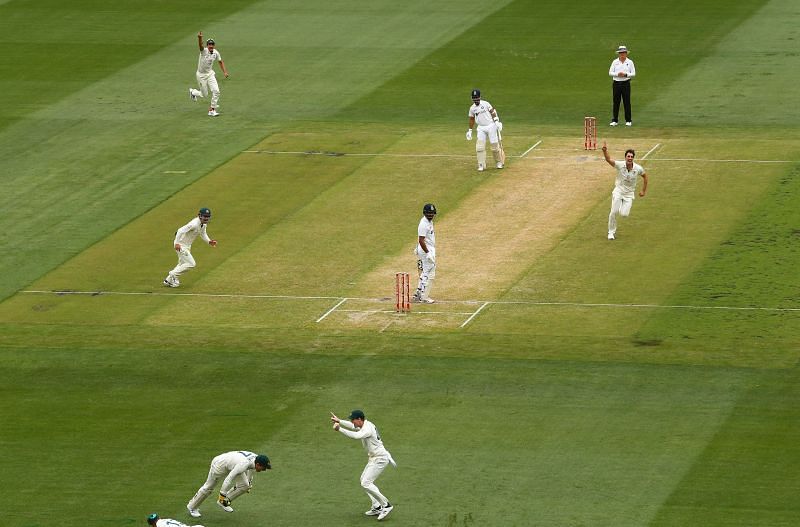
Consequently, one can’t help but wonder if Cheteshwar Pujara is enduring a bad run, or, if that record-breaking series against Australia was the aberration, rather than being the norm.
Since making his debut in 2010 against Australia at Bengaluru, Cheteshwar Pujara finds himself in a rare bunch of cricketers to have played more innings overseas, than at home.
In India, the right-handed batsman has batted on 64 occasions and possesses a healthy average of 59.84, which include 10 hundreds and 18 half-centuries. Away from the comforts of home though, Cheteshwar Pujara’s batting average spirals to 36.85, leading to a differential of nearly 23 runs.
The initial thought might be to term batting conditions outside India as challenging, and label Cheteshwar Pujara’s indifferent statistics as something most batsmen have to undergo. On further introspection though, it highlights a rather worrying trend.
Cheteshwar Pujara has an uninspiring record overseas
Of the 68 innings that Cheteshwar Pujara has played away from home, he has had the opportunity of batting in Sri Lanka 6 times. For those unaware, the pitches in the Islandic nation resemble those that are found in India. Unsurprisingly, Cheteshwar Pujara has piled up 454 runs across those essays, at an astounding average of 90.80.
However, when moving into surroundings that offer a little more help to fast bowlers, Cheteshwar Pujara has struggled, and pretty arduously.
In England, Cheteshwar Pujara, despite having a century to his name, only averages 29.41 (500 runs in 18 innings), whereas that number drops drastically to 20.00 (160 runs in 8 innings), when batting in New Zealand.
Though the stats slightly improve when touring South Africa (411 runs in 13 innings at 31.61), they fall sharply in the West Indies, where he has only mustered 122 runs across 6 innings.
Prior to the current series, the only anomaly seemed to be his record Down Under, with Cheteshwar Pujara averaging a tick over 51 runs-per-innings. However, that cumulative has also taken a hit, owing to his current travails.
To put things into further perspective, if one were to remove the 521 runs Cheteshwar Pujara scored on his last visit to Australia, his batting average (Down Under) dwindles to 26.4 (264 runs in 10 innings), with no hundreds and a solitary fifty.
Thus, there seems to be enough evidence that Cheteshwar Pujara’s patchy run abroad could morph into a more significant concern, especially if India aren’t careful.
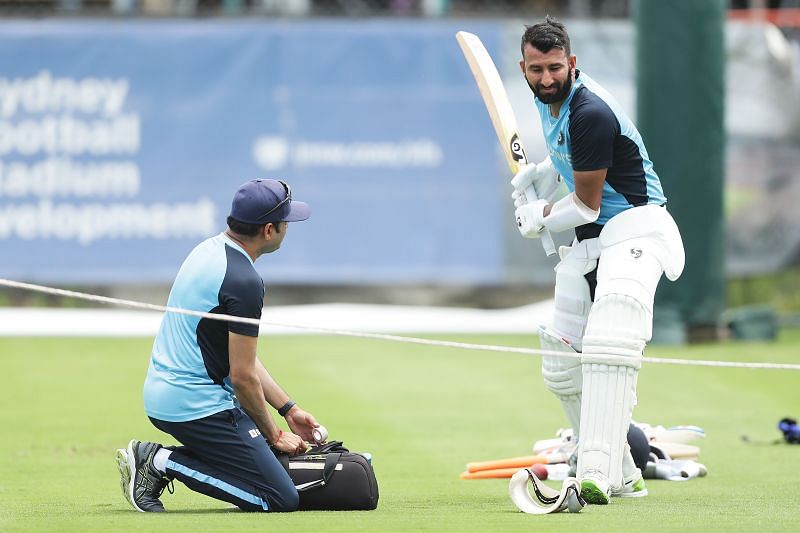
More recently, there has been another problem that has engulfed Cheteshwar Pujara’s batting. And, that, could provide more than a furrowed brow or two – in fact, it could be much more discernible than the lack of runs.
For a while, in the mid 2010’s, there was a theory that portrayed Cheteshwar Pujara being susceptible to the incoming delivery. To an extent, those notions weren’t dumbfounded, considering he has been bowled on 25 occasions and been dismissed LBW 16 times.
As far as numbers are concerned, that tallies up to nearly 33% of his dismissals overall – a damning number for someone who has prided himself on his technique.
To counter the above, Cheteshwar Pujara seems to have made a slight tweak to his technique, wherein he hasn’t gotten as far forward as he would’ve done, at the start of his career. Additionally, there seems to be a slight movement across his stumps, to prevent the ball exploiting the gap between bat and pad.
Subsequently, he has had to feel for deliveries that he ideally would’ve smothered off the front foot. In the process, he has been bowled only twice (in 8 innings) since the start of 2020. But he has opened up a different avenue of dismissal aka getting caught in the slip cordon and by the keeper.
Against Australia, the three times Cheteshwar Pujara has been dismissed against fast bowlers, he was seen fishing for deliveries that he might’ve left alone, under ordinary circumstances. Yet, that slight trigger movement to cover for the incoming ball has forced him to uncharacteristically go searching for deliveries.
Furthermore, there exists another explanation for the discrepancy between Cheteshwar Pujara’s statistics, at home and overseas.
To state things clearly, Cheteshwar Pujara has never been a batsman who has thrown caution to the wind and grabbed games by the scruff of their necks. Yet, at least in India, he has been someone who has been willing to rotate strike and keep the scoreboard ticking. A strike rate of 50.61, as opposed to 40.35, is testament to the fact.
Also Read: IND v AUS 2020: Could Cheteshwar Pujara's slow batting approach cost India at Adelaide?
When batting abroad, Cheteshwar Pujara seems to retreat into his shell quite a bit, meaning that he gets stuck at one end. More importantly though, it allows the bowlers to settle into a rhythm without worrying about potential boundary-scoring opportunities.
In SENA countries, Cheteshwar Pujara has scored 5 centuries. And, rather intriguingly, only one of those (106 at the MCG) has come at a strike rate of below 50. The rest have seen Cheteshwar Pujara being more proactive, meaning that he has made the bowlers think, instead of just tiding with the flow.
In the ongoing series, Cheteshwar Pujara has scored double digits twice. On both occasions though, he has struck at less than 27 runs per 100 balls. Subsequently, despite him eating up a major chunk of deliveries, India haven’t really managed to veer to safety.
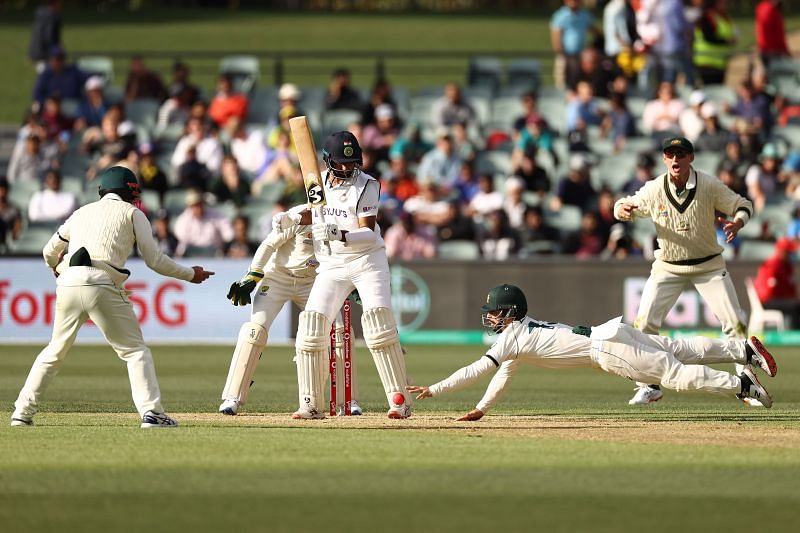
At Adelaide, they found themselves in strife until Ajinkya Rahane and Virat Kohli joined hands. A few days later, in Melbourne, the former bailed India out again, courtesy a sublime knock.
To put things bluntly, one isn’t trying to imply that Cheteshwar Pujara throw the kitchen sink at every ball he faces. Rather, he needs to ensure that he maintains a decent tempo, thereby allowing India to release the pressure and transfer it onto the Australians.
Though it might not be easy to throw a tried and tested mantra completely out of the window, there is enough to suggest that Cheteshwar Pujara might be better off adding a few additional strings to his batting bow. It must also be noted that batting without intent, away from home, has hardly been as fruitful, for a wicket-taking delivery is always round the corner.
Prima facie, there seem to be quite a lot of flaws that need ironing out, as far as Cheteshwar Pujara’s overseas form is concerned. However, one also needs to remember that Cheteshwar Pujara has not transformed into an ordinary batsman overnight. Rather, he just finds himself at a crossroad where he has been found out, and he might need to evolve a tad.
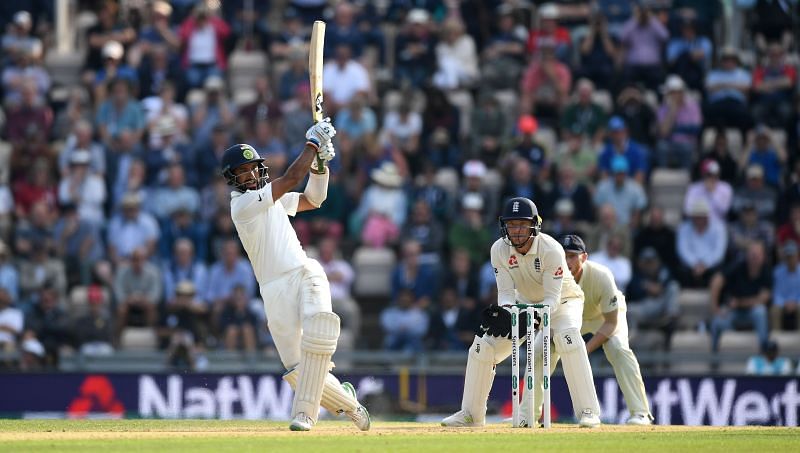
A couple of years ago, owing to a stellar series Down Under, Cheteshwar Pujara might’ve felt that he had done enough to warrant a permanent spot in the Indian side, irrespective of the venue.
Yet, as the 2020-21 instalment hurtles into its home patch, there are still question marks over his ability to be the all-conquering No.3 batsman India have craved.
And, with everything that has made the headlines lately, both on the field and off it, perhaps India might not have wanted to have another quandary on their plate. In fact, it is a conundrum they could well have done without.
Also Read: Has Ravichandran Ashwin finally turned a corner?